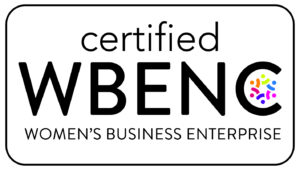Project: Program Management for System Implementation for Certification Group
Project: Lean Enterprise Implementation for Small Manufacturer
Sutton was brought in by the prime instructional design contractor as a subject expert to help with design and implementation of the Lean Program. Based on an analysis of the organization and an intensive collaborative design session with key leaders, we created a customized training program that addressed the specific client environment and improvement needs, including applied and interactive learning for the 2-day in-person course. Then, we piloted it, adjusted it based on the pilots, and rolled it out to the office staff in two locations, focusing on building lean leaders to support the full implementation.
We also supported the client in filling a lean coordinator role and setting up key measures to use in tracking the implementation. We helped design a “Bottom-up” development strategy to be completed over and estimated 3-year time frame. Internal staff took a growing role during the implementation as their knowledge and skills developed.
To build skills, we included one-on-one “Action Learning” Coaching where the learners applied the lean A3 Thinking skills on actual work projects. We also identified an internal candidate to build into an internal training leader, using a “Train the Trainer” approach.
Our role ended in March 2020 with the shutdowns related to the global pandemic. By that time, the client had a lot of assets and internal resources to continue the implementation.
- Produced a strong, custom Lean training program that can continue to be used and rolled out by the client.
- Provided a measurable plan for the implementation.
- Identified the key hurdles and needed strategies for management to establish a solid Lean culture.
- Delivered over 20 projects through the Action Learning Cycles that have the potential to deliver at least $1.5M in cost savings.
Project: Technology Strategy for Large Nonprofit Serving a Visually Impaired Community
In partnership with a process and technology firm, Sutton served as a subject expert on the team. We completed a detailed assessment of the current state of its technology, including applications, hardware, platforms, networking systems, and vendors. We also evaluated manual and automated technology processes and staffing needs. This included over 10 in-person interviews at three locations, plus about 10 phone/web meeting interviews, inventory of technology assets, observation of current programs and training, plus focus groups with actual clients on technology needs and preferences.
Based on the insights from the data-gathering, we completed an integration and process assessment to identify gaps and look at priority opportunities for operational efficiency. This included producing dataflow diagrams, a gap analysis report, and quick productivity improvements that technology can support (along with costs to implement the improvements).
These efforts culminated in a comprehensive technology assessment, including strategies to improve overall technology maturity, and a phased technology strategy to reach the desired technology improvements over time.
- Budget and priorities by an implementation phase.
- Recommended IT infrastructure.
- Resource requirements with needed skills and competencies for internal staff and vendor recommendations.
- IT Security upgrades. Quick wins of both process automation and technology updates.

